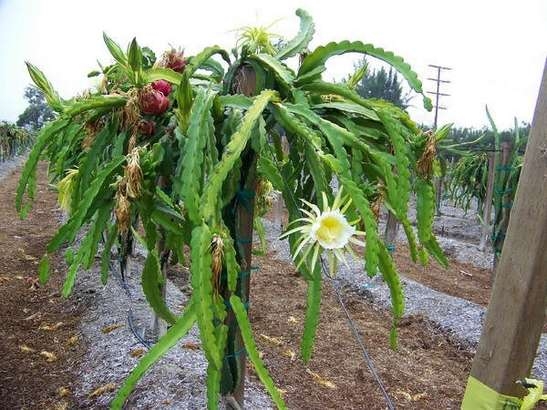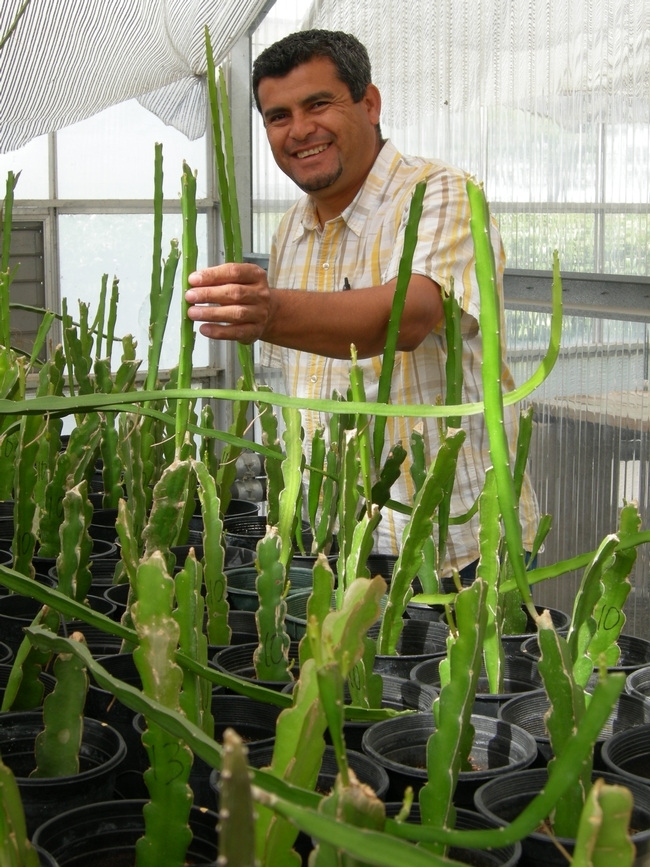Posts Tagged: Ramiro Lobo
San Diego is a hub for small farms
With 5,700 small-scale farms, San Diego County bills itself as having the state's largest concentration of small farms, reported Tatiana Sanchez in the San Diego Union-Tribune. About 4,000 of the farms are from 1 to 9 acres in size.
"We have 3 million consumers in San Diego County and maybe 17 to 18 million consumers in Southern California. It makes an opportunity for someone to find a niche and find a place to succeed in this world and sell their product," said Eric Larson, executive director of the San Diego County Farm Bureau.
UC Agriculture and Natural Resources has an advisor dedicated to agricultural economics and small-scale farm production in San Diego County. Ramiro Lobo, who is based in the UC Cooperative Extension office in San Diego, said new and veteran small farmers face tough odds.
"Most of the land that is available in San Diego County is already being farmed. People are paying (standard) real estate prices for agricultural land," he said.
For existing farmers, the challenge is simply to stay afloat financially, Lobo said.
Decades ago, most small farms grew avocados and citrus, the article said. Because of water challenges, today's small-scale farmers typically grow high-value crops like cut flowers and other nursery items. Another crop that is growing is popularity is pitahaya, or dragon fruit. Lobo is testing pitahaya varieties at the UC South Coast Research and Extension Center in Irvine. Each summer he invites farmers and the public to the center to sample the fruit and learn about pitahaya production.
Exotic pitahaya possible desert cash crop
A native of Mexico and South American, the beautiful tropical fruit pitahaya - also known as dragon fruit - could be a viable crop for Southern California desert, said an article in the Desert Sun.
Ramiro Lobo, UC Cooperative Extension advisor in San Diego County, shared the results of pitahaya studies conducted in San Diego and Irvine with a group of inland desert farmers recently.
“The fruit size and quality is good ... we’re getting great marketable yields,” Lobo said.
In March, five varieties of the fruit were test-planted at UC Riverside's Coachella Valley Agricultural Research Station in Oasis.
“We’re selecting varieties that can tolerate the heat,” said José Luis Aguiar, UCCE advisor in Riverside County. “They’re doing well in San Diego County and Irvine and we’re trying to extend the range.”

Dragon fruit grows on a cactus plant. (Photo: Jose Luis Aguiar)
The best agritourism is found on real working farms
The San Diego Union Tribune ran a 1,500-word story on local agritourism last Friday, featuring UC expertise and resources front and center.
UC's agritourism coordinator Penny Leff provided reporter Emily Rizzo with a definition of agritourism, "a commercial enterprise on a working farm or ranch conducted for visitor enjoyment and education that generates supplemental income for owners."
Promoting agritourism in San Diego has been underway for years, but positioning the Southern California city as an agritourism destination, said UC small farm advisor Ramiro Lobo, is a relatively new concept.
In 1993, Taco Bell's founder opened Bell Gardens, a 115-acre educational farm that attracted 100,000 visitors annually to picnic, buy fresh produce and ride a mini-train. The ranch attracted busloads of agritourists but closed in 2003, the article said.
“It was obviously a heavily subsidized operation, but (it) created attention,” Lobo commented. “Entrepreneurial farmers started tapping into this as a real alternative to diversify their income stream.”
San Diego County now has more than 100 self-identified agritourism businesses, Lobo told the reporter.
Leff and Lobo agree that consumers want to visit real agricultural operations and have a keen sense when it comes to discerning hokey operations from working farms.
“You don’t have to create a Disneyland,” Lobo said. “We want working farmers to be able to capitalize on this without having to spend a ton of money to create something artificial. Pseudo-farms, for the most part, never really did a great job. Those have come and gone.”
Among the UC agritourism resources mentioned in the story were:
- The UC California Agricultural Tourism Directory, which highlights farms and ranches to visit and upcoming events, at CalAgTour.org.
- University of California Cooperative Extension in San Diego County

U-pick operations are a form of agritourism.


